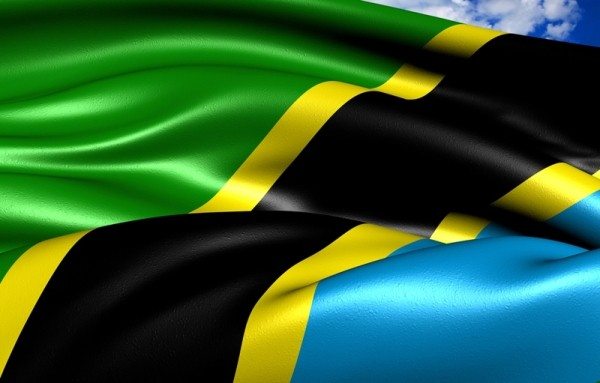AfricaPress-Tanzania: CONCERNS are rife that debt levels to some African countries have risen to record high and repayment burden is growing heavy. Some analysts have even suggested the narrative about Africa seems to have gradually shifted from ‘Africa rising’ to ‘rising debt in Africa.’
Fitch Ratings warned in a report published in July that a number of countries in sub-Saharan Africa are in danger of slipping into a major debt crisis as government debt burdens across the region rise at a faster pace and to higher levels than in other emerging markets.
Eight countries are already in debt distress and a further 18 are at high risk of distress, leading to a heightened risk of rating downgrades and defaults, the credit rating agency warns in the report.
Given the general alarming debt levels in Africa, what is the debt situation for East African Community (EAC) member states?
Tanzania
By using debt-to-GDP ratio which measures a country’s public debt to its gross domestic product (GDP), Tanzania has the lowest debt burden of 27.1 per cent compared to a threshold of 70 per cent, according to the Minister for Finance and Planning, Dr Phillip Mpango.
By comparing what a country owes with what it produces, the debt-to-GDP ratio reliably indicates the particular country’s ability to pay back its debts.
Presenting government budget for 2020/21 financial year in June, Dr Mpango said the value of external public debt to GDP was 16.3 per cent compared to the threshold of 55 per cent and value of external public debt to exports was 103.9 per cent compared to the threshold of 240 per cent.
Dr Mpango said basing on debt sustainability analysis (DSA) of 2019, which shows that Tanzania’s public debt is sustainable and the country remains at low risk of external debt distress.
Kenya
Kenya is leading other EAC member states with the highest debt distress. Its debt to GDP ratio came in at an estimated 62.1 per cent in 2019, which is 12.1 per cent above the IMF recommended threshold of 50.0 per cent.
Government debt is forecasted to 70.0 per cent of GDP in 2021 on the back of rising debt levels and weak revenue growth.
In May, Moody’s Credit Agency released its rating outlook where it changed Kenya’s sovereign credit outlook to “negative”, from a previous outlook of “stable”, but affirmed the earlier on B2 credit rating.
The agency highlighted that the negative outlook was a result of rising financial risks brought about by the country’s large borrowing requirements especially during this time where the fiscal outlook is deteriorating, given the erosion of the revenue base and the high debt and increased interest burden.
According to Moody’s, the large borrowing needs, the negative fiscal outlook, will and continues to expose Kenya to exchange and interest rate shocks thus threatening any fiscal consolidation measures that had been set by the government.
In July, the global rating agency, Standard and Poor’s (S&P) also lowered its outlook on Kenya’s economy to “negative” from “stable” while affirming the country’s rating at ‘B+/B’, mainly due to the fallouts from the pandemic, which have slowed down the country’s growth and weighed down on its already weak public finances.
The negative outlook reflects the worsening fiscal position of the country amidst the pandemic and the disruptions to revenue collection.
Uganda
Uganda’s public debt is projected to hit 47.5 per cent of the Gross Domestic Product (GDP) in 2020/2021 financial year, because of increased borrowing and expenditure to counteract the COVID-19 pandemic on the economy, according to the Uganda’s Commissioner for the Macroeconomic Department at the Ministry of Finance, Planning and Economic Development, Dr. Albert Musisi as reported by a local daily, Daily Monitor.
A joint Debt Sustainability Analysis by World Bank and International Monetary Fund says Uganda’s debt is sustainable, with a low risk of external and overall debt distress under the Covid pandemic macro-framework.
The impact of the pandemic on Uganda’s economy is felt through supply chain disruptions; and lower commodity export prices, remittances, tourism, and capital inflows leading to deterioration in the current and financial accounts. In addition, as a response to the crisis, the fiscal position is expected to deteriorate and be financed with debt.
Rwanda
Total government debt to GDP 58.4 per cent in 2019, according to the International Monetary Fund (IMF). The African Development Bank says in an outlook for Rwanda that public and publicly guaranteed debt increased to 50.3 per cent of GDP in 2019, though Rwanda is assessed at low risk of debt distress.
A joint Debt Sustainability Analysis by World Bank and International Monetary Fund of June this year says while Rwanda’s debt remains sustainable, the risk of external and overall debt distress has moved to moderate from low relative to the previous DSA in April 2020 due to the impact of the global COVID19 crisis.
Burundi
An IMF report puts public debt to GDP ratio at 57.4 per cent.
According to the IMF report, COVID-19 is having an adverse economic impact on Burundi.
The pandemic is affecting Burundi through an evolving domestic outbreak and economic spillovers from the global and regional environment, including from the containment measures introduced in trading partners and neighboring countries.
Economic growth projections for 2020 have been revised down by 5.3 percentage points to -3.2 per cent in 2020. The pandemic has exacerbated pre-existing economic challenges and creates an external financing need of 4.7 percent of GDP in 2020 and 2021, mainly as a result of lower exports in line with lower foreign demand.
This is due to lower global growth and transportation bottlenecks from containment measures in other countries; elevated imports needs related in part to the planned fiscal spending aimed at responding to the pandemic; and reduced remittances inflows.







